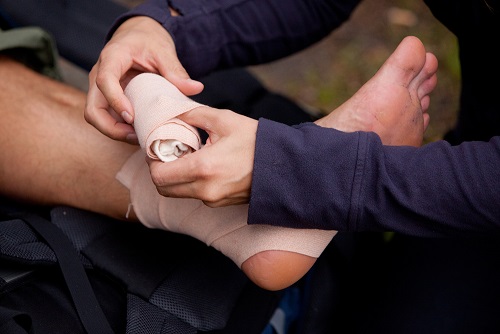Now that we can rent bikes in many urban cities including Toronto, more cyclists have taken to the road as a great way to get to and from work or appointments. Some people are choosing to leave the car at home and bike to work, while others are using bikes for business, delivering everything from courier packages to groceries. And then there are the weekend cyclists who take the family out for a bike ride to the nearest park and the hard-core road warriors who join cycling clubs. No question about it, cycling is a fun way to get some exercise, but like any sport, we need to exercise caution to ensure our own safety.
Transport Canada on their website www.tc.gc.ca reports that “about 2% of traffic fatalities are bicyclists, 94% of bicyclists killed in traffic were 16 years of age or older, 34% of fatally injured bicyclists were struck by a vehicle in darkness and 19% of bicyclists killed in traffic crashes were struck by a heavy truck.”
Cyclists, along with motorcycles, mopeds and pedestrians are considered vulnerable due to their lack of protection if struck by another vehicle. The Transport Canada website advises “The major safety measure for bicyclists is to wear a helmet that meets safety standards. While many jurisdictions have laws requiring helmet use by bicyclists less than 18 years of age, fewer require helmets for adults. Bicyclists should also wear reflective bright colours and protective clothing to increase their visibility and to protect them from abrasions in the case of a fall.”
Vulnerable road users should take extra caution to protect themselves in traffic and obey the rules, including obeying stop lights and signs and outfitting their bike with proper lights for night riding. “The establishment of separate bicycle lanes is a way of protecting bicyclists from motorized vehicles,” states Transport Canada. However, when separate bike lanes are not available, both cyclists and drivers should exercise caution. Cyclists need to be wary of vehicles turning, stopping or opening doors or “dooring” as it is called, while drivers need to operate their vehicle in a safe manner including allowing adequate space between the vehicle and the cyclist. More information on safety measures for vulnerable road users can be found at www.tc.gc.ca/eng//motorvehiclesafety/tp-tp2436-rs201002-1067.htm
The most common cause of cycling accidents is colliding with a car or truck. This includes vehicles inappropriately passing cyclists and not allowing proper space, cutting into designated bike lanes to pass or make a turn, aggressive driving, impaired driving, opening car doors without looking or dooring, and general carelessness or negligence. Accidents also happen when a driver just doesn’t see a cyclist, either because they are in a blind spot, they have little or no lights and can’t be seen at night, or the vehicle is large, such as a truck, and does not see the cyclist. In other cases, accidents happen when a vehicle turns in front of a cyclist, backs out of a driveway in front of them, or cuts them off causing the cyclist to crash into the vehicle or other objects.
By their nature of vulnerability, injuries sustained in bicycle accidents are often serious and life-threatening. Most common bicycle accident injuries include lacerations and abrasions, bone fractures and broken bones, but more serious injuries include internal bleeding and injury, spinal cord injuries and paralysis, catastrophic brain injuries and loss of life. While seeking medical care is your first priority, seeking legal help from an experienced personal injury lawyer should be your next priority.
Here’s why: if you have been involved in a cycling accident involving a car or truck or motor vehicle, you are entitled to claim Accident Benefits, regardless of who is to blame. Many cyclists do not own a car and therefore, don’t have an automobile insurance policy. You will however be entitled to claim benefits from the automobile policy associated with the other vehicle involved in the accident. You may also pursue legal action against the party responsible for the accident by way of a tort claim. However, it is important to know that there are strict limitations regarding claims for bicycle accidents. You must notify the No-fault Insurer within seven days of the accident. If pursuing a tort claim, you have within 2 years of the day the accident occurred to commence the tort claim. Time is of the essence and bicycle accident claims can be complicated to prove fault in court. This is why it is critically important to seek the aid of an experienced personal injury lawyer, to ensure that the accident scene is properly examined and witnesses are interviewed as soon as possible.
If you have been injured in a cycling accident, call us today. At Horowitz Injury Law, we have more than 35 years of experience in successfully dealing with bicycle accidents. We ensure you will receive strong and dedicated legal support to get you the compensation you deserve to help cover medical costs and loss of income and other financial obligations. Call us at 416-925-4100 and request a free legal consultation.




